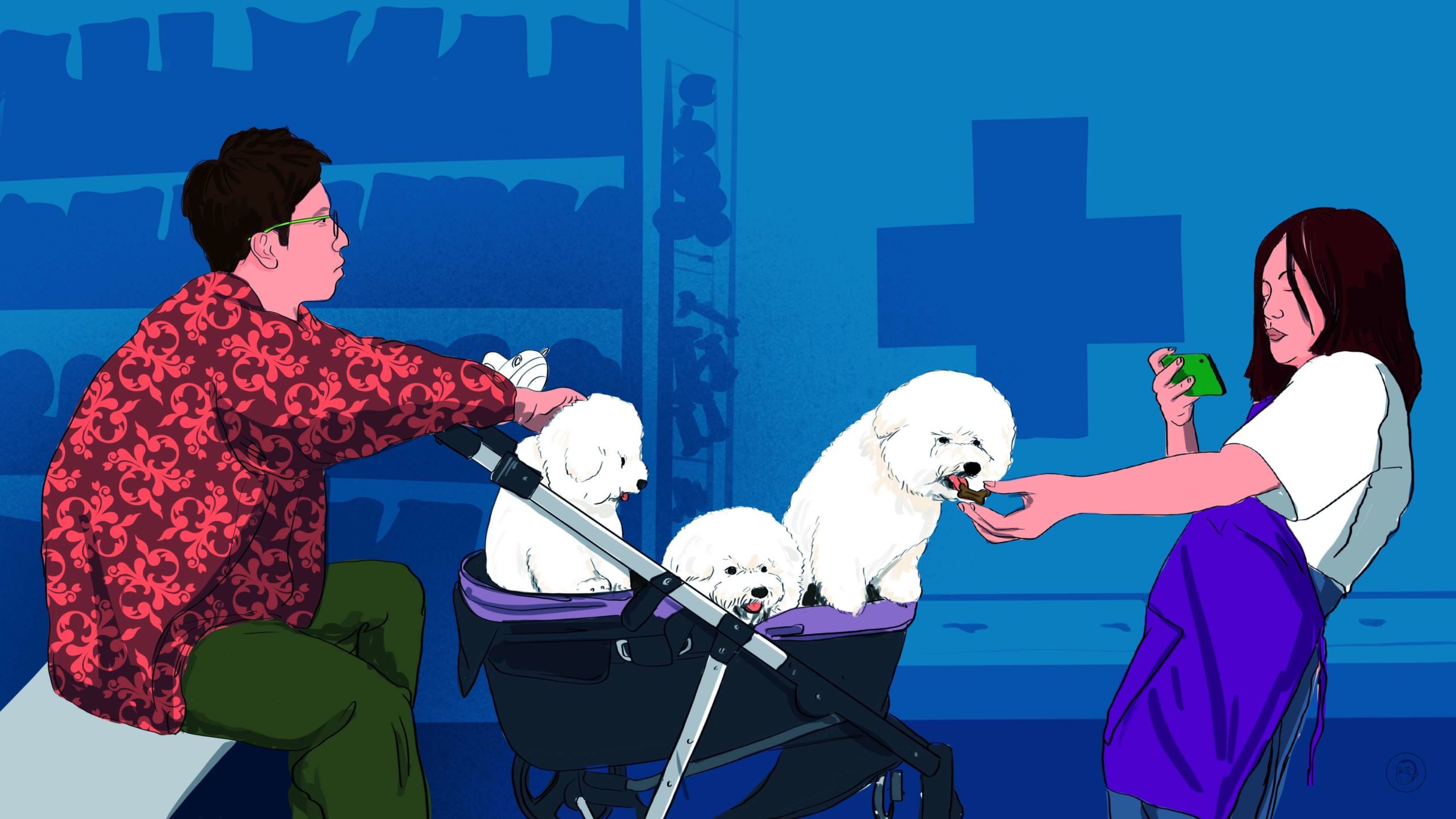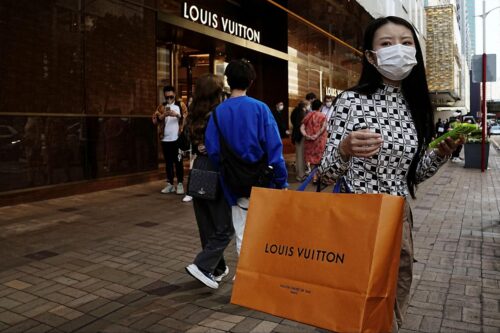After COVID, China’s pet economy is booming
The pandemic has been good for China’s pet industry: Single millennials, pensioners, and lonely people locked up at home have bought pets and are now spending a fortune on food, toys, grooming, photography, and even funerals.

The pet sector was one of the four most popular product categories in this year’s Singles Day online shopping festival in China, along with toys, outdoor sports, and jewelry. In fact, according to new data released last week, the “pet economy,” especially pet food, had a fantastic Singles Day:
- Sales of pet food reached 1.90 billion yuan ($268.08 million), a year-on-year increase of 38%. This included sales of cat snacks of 362 million yuan ($50.83 million), an increase of 32.73%, and dog snacks of 121 million yuan ($16.99 million), an increase of 31.43%.
- High-end imported pet snacks and baked cat foods were especially popular this year. Sales of baked cat foods on Alibaba’s Tmall platform increased by more than 700% year-on-year, and the turnover of high-end imported snacks on JD.com increased by 150%. (In last year’s Singles Day festival, freeze-dried cat food was the most popular product).
- The leading brand for pet food was Acana from the U.S., but there were three Chinese brands in the the top five, namely Myfoodie 麦富迪, PureNatural 伯纳天纯, and Nourse 卫仕.
2019: A year of pet significance
An important milestone in the rise of the pet economy occurred in 2019. In that year’s Singles Day festival, cat food overtook baby milk powder as the most popular and best-selling imported product category on Tmall.
Since then, the scale of the pet economy has grown explosively, as has the variety of products, which now includes a wide range of pet foods and snacks; nutritional products and vitamins; automatic litter boxes, water dispensers, feeding machines; and pet clothing. The variety of pet services has likewise expanded greatly to include pet medical care, grooming, photography, swimming lessons, behavior training, pet hotels, and even pet matchmaking and pet funerals.
The growth seems unstoppable. According to an industry report released last week, in 2021, China had a total of 58.06 million cats and 54.29 million dogs, and the total scale of the pet economy was 249 billion yuan ($34.96 billion). Another report released in September by the Chinese consultancy iMedia Research 艾媒咨询 estimated China’s pet economy in 2022 to be worth 493.60 billion yuan ($69.31 billion), a year-on-year increase of 25.2%, and forecasts the industry to reach 811.4 billion yuan ($113.94 billion) in 2025.
The iMedia report also says there is a shortage of veterinarians: China needs at least 368,000 professional vets, but as of 2020, China had only 142,910, of whom 53,152 are assistant veterinarians who are not qualified to practice on their own.
Indeed, there is still plenty of potential for growth of the pet economy: According to a report released this month by Guosheng Securities 国盛证券, in 2021, there were 91.47 million pet-owning households in urban areas in China, accounting for an overall penetration rate of less than 20%, compared with 70% in the U.S., 57% in Japan, and 49% in Europe. In 2021, China’s pet economy was only 28.03% of the size of the U.S. market, but it’s growing three times faster than the U.S. pet economy.
Big-spending new pet owners
Although the pet penetration rate is lower in China, Chinese households actually spend relatively more on their pets. In 2021, the annual consumption per pet in Chinese households was 2,041 yuan ($286), accounting for 6.73% of total household expenditure, compared with only 1.71% of household spend in the U.S.
The Chinese pet economy started late. Until the early 1990s, keeping dogs as pets was illegal or at least frowned upon by the authorities in many urban areas. In that decade, Chinese cities removed blanket bans on dog ownership, but started to place specific restrictions on dog ownership, such as the size of animals permitted to be kept as pets. The launch of the China Small Animal Protection Association (CSAPA) in 1992 laid the foundation for mass pet ownership in China, and the following year, Mars, the U.S. chocolate and pet food company, opened its first factory. Other foreign brands followed suit, and pet supply stores started opening up in China’s largest cities.
From 2000 to 2010, Chinese cities issued regulations on dog breeding. Various Chinese pet food companies such as Peidi 佩蒂动物营养科技, Gambol 乖宝宠物, and Bridge Petcare 比瑞吉 were established that initially manufactured pet food for export. From 2010 to 2020, cat and dog ownership expanded rapidly as did local companies serving the new market. By 2021, local brands accounted for 40% of the top 10 highest-selling dog food brands in China, and 70% of the top 10 cat food brands. But many of China’s pet food companies, including some of the large listed companies, still largely focus on white label production for overseas brands and lack independent brand power, which reduces their profit margins.
Pets are perfect for a nation of pensioners and single millennials
In a peculiar way, pets are fitting in neatly with several aspects of China’s economy: an aging population, an increasing number of single adults living alone, rising living standards, and the COVID home economy:
- By the end of 2021, China’s elderly population aged 60 and above will consist of 267 million people, accounting for 18.9% of the total population, according to the National Health Commission.
- China’s current single adult population exceeds 240 million people, of whom more than 90 million are living alone, per one estimate.
- From 2012 to 2021, the per capita disposable income of Chinese urban individuals increased from 16,510 yuan ($2,318) to 35,128 yuan ($4,933).
The rapid increase in the number of old and young people who live without families has brought a rise in pet ownership. The younger people, those born after 1990, are driving the growth of pet ownership in China: Since the start of the COVID pandemic in 2020, people born after 1990 and even after 1995 are now the mainstream of pet owners, according to one report. These people prefer to buy their pet products online, which is why pets have had such an impact on Singles Day ecommerce in recent years.
The takeaway
Although China’s pet economy started late, animal companions have become a big business, and the industry is only going to grow.






